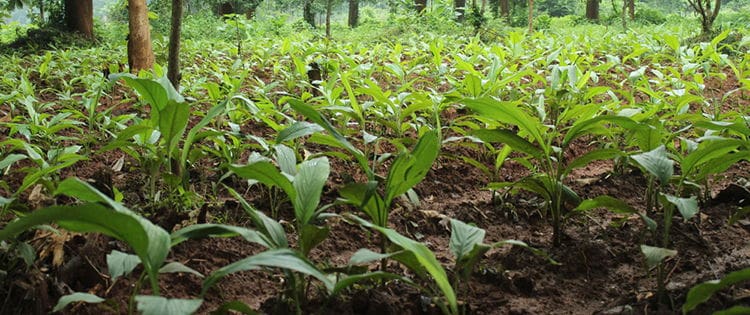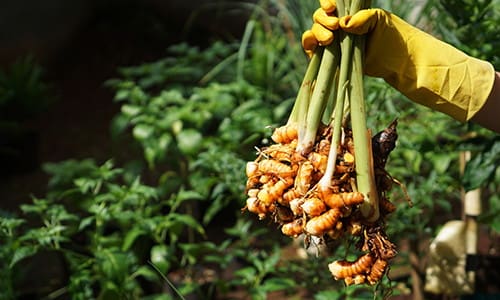Most of us look for natural, organic and DIY remedies when it comes to looking after the health of our garden.
Pest control using kitchen ingredients, soil fertility management using crop rotation, creating compost from kitchen waste – we all have these tricks up our sleeves to maintain a healthy garden through common products we use or even discard in our daily lives.
Like all relationships, your relationship with your garden too can be a symbiotic one. Other than just providing you a pretty landscape, or vegetables or fruits – your garden is a source of health too. This goes beyond the physical activity it demands that keeps you on a regular routine of lunges and squats, but also can be your support system when it comes to your health!
There are, of course several plants that can play an important role in health and wellbeing, however, if I were to choose the one plant that you must have in your backyard, a single resource with several remedies, that would be turmeric.
Turmeric
Turmeric, or Curcuma longa, is a deciduous plant typically suitable for rainforest-like climates. It grows from rhizomes, that may be planted at the end of winter. Even though it is best suited for tropical regions, it is a hardy plant and can withstand quite a range of weather conditions.
You could consider growing it in a greenhouse, and if you have harsh winters, you could dig up the rhizomes and store them through the winter, ready to plant again at the beginning of spring.
The remedies associated with turmeric are many, some based on extensive study, others backed by traditional practices – here are the top few, that will probably convince you to get a few of those rhizomes in time for the next spring!
The most common way to use turmeric would be to powder the dried (and peeled) rhizomes, which can be stored to last through the entire year. The most well-known bioactive compound in turmeric is curcumin, however it is only one of hundreds that are found in this plant. Curcumin is found in all the parts of the plant. While the flowers and leaves are edible and beneficial too – the powdered rhizome is most suitable for long term storage.
Related: 12 Native American Remedies That We Lost To History
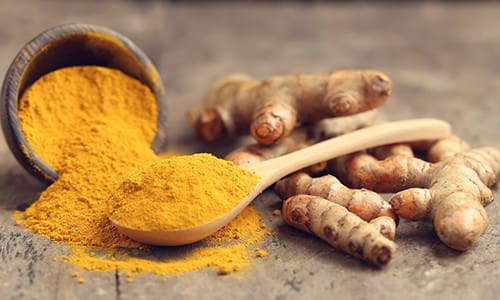
Muscle and Joint Aches
Rural village practices for livestock with muscle injuries including heating turmeric powder on a hot pan, and then applying it externally to the inflamed area. There are several accounts of the injury improving dramatically with animals being back on their feet within a day or two. Similar accounts exist from patients of arthritis, for relief with joint pains.
Hot turmeric powder on aching joints is one way to relieve the pain. You could also consider making your own bath salts with dried turmeric leaves and flowers and enjoy a long bath to soothe the body.
A Relaxant
A regular dose of curcumin is said to have mood balancing properties, reducing the effects of illnesses like depression and anxiety.
Add a little turmeric powder to your meals – you can choose from well-known recipes of smoothies and turmeric lattes or get creative with your meals by using turmeric in breads, pastas, soups and teas – the choices are endless, and the benefits are abundant. The bright yellow color it imparts, and the creative pleasure of cooking with ingredients from the garden would be additional reasons to relax the mind!
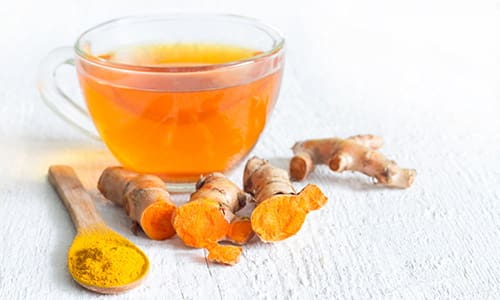
Skin Care
Indian traditional weddings have a ceremony known as the “haldi” ceremony prior to the official wedding. The ritual includes applying a yellow turmeric paste on the bride and groom, so that their skin is beautiful and glowing for the wedding.
Turmeric is known to help deal with acne, blemishes, and sun damage.
Various recipes may be followed – a paste of turmeric and yogurt can work as an effect face pack. Turmeric with aloe vera gel will help soothe sunburns and restore damaged skin. The anti-bacterial properties of turmeric help prevent the breakout of acne.

Immunity
The bioactive compounds in turmeric are known to build health and immunity – which is why turmeric infusion is an often used remedy for the common cold.
Using turmeric in gargling water can help recover from coughs faster – and a spoonful of honey with a pinch of turmeric is a great daily supplement that builds better resistance to infection.
Culinary Uses
The entire plant is edible, however since it is seasonal, it is the powdered rhizome that you will find in most recipes. The advantage of growing the plant in your backyard is that you have abundant access to the fresh leaves flowers and rhizomes, that can only be relished when it is in season.
Turmeric leaves are used to wrap meat for steaming. It imparts a subtle earthy flavor to the dish, and is often used for steamed fish. It may also be used to make steamed rice pancakes, and some desserts. When fresh leaves are available, harvest them often and use them. Lining the pot with turmeric leaves to cook rice imparts a delicious aroma and flavor to the meal.
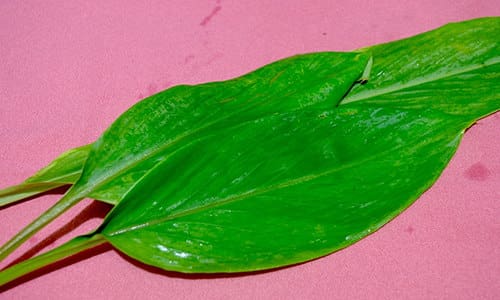
Turmeric flowers are bright, pink, and beautiful – they emerge from between the leaves and look like hidden treasures in the garden. You could cook them, add them to stir fries, or eat them raw in salads. They also may be used to make fritters.
The fresh rhizome itself can substitute turmeric powder in many recipes. It also is great for pickling – and can be fermented in brine to last the rest of the year.
Finally, this super plant plays an important role in your garden as well: it is a natural repellent and keeps pests away from the rest of the plants in the garden, which is why it is a great plant to include in mixed crop layouts. It is also a great ground cover crop and can grow in shaded areas under trees, thus protecting the topsoil and keeping vermin away from the rest of the crops.
You may also like:
The Antibiotic Plant That Grows Nearby (Video)
Survival Foods You Need To Forage This Spring
